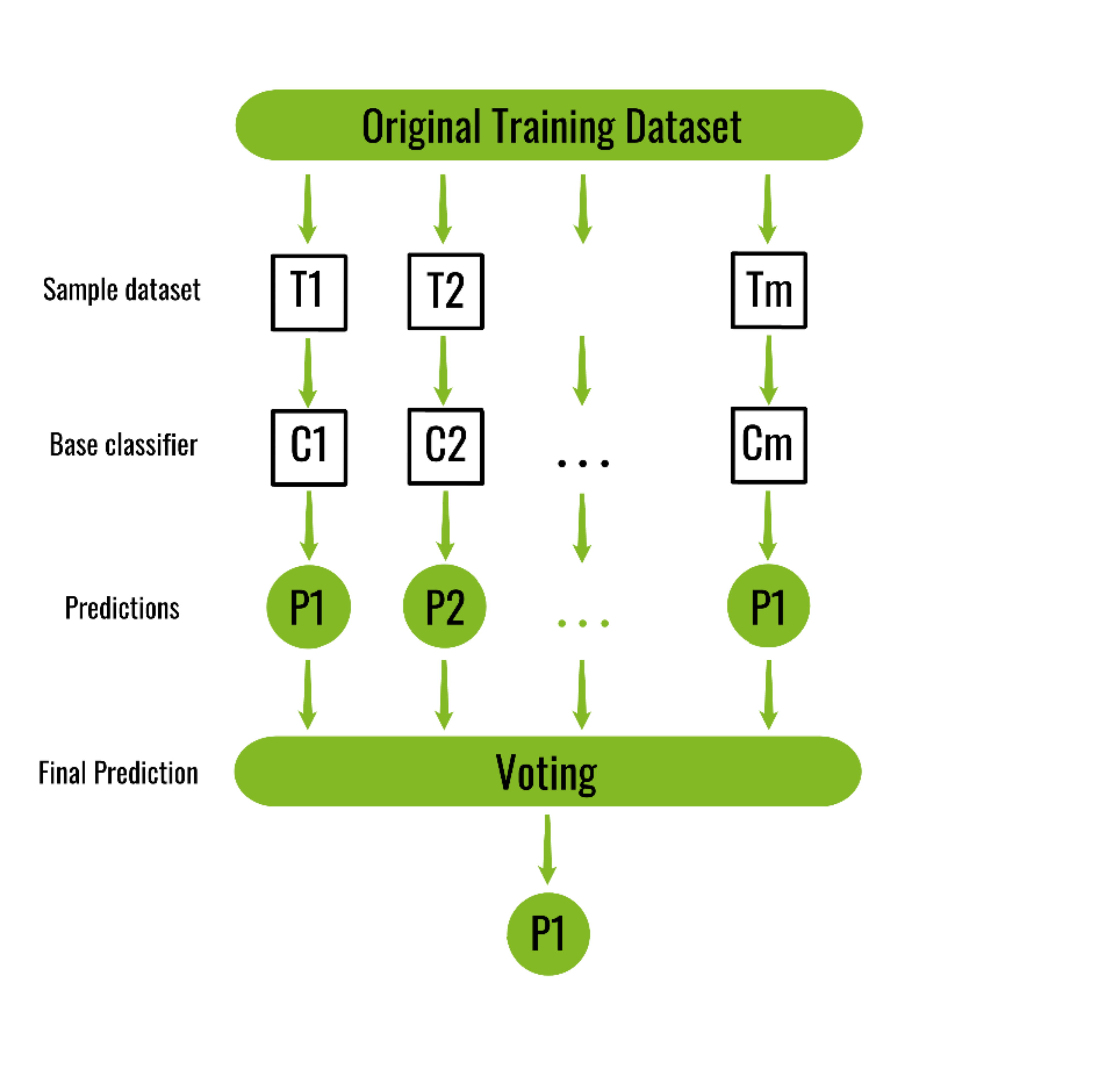毫升 |装袋分类器
Bagging 分类器是一个集成元估计器,它将每个基分类器拟合到原始数据集的随机子集上,然后聚合它们各自的预测(通过投票或平均)以形成最终预测。这种元估计器通常可以用作减少黑盒估计器(例如,决策树)方差的一种方式,方法是将随机化引入其构建过程,然后将其集成。
每个基分类器与一个训练集并行训练,该训练集通过随机抽取原始训练数据集中的 N 个示例(或数据)进行替换,其中 N 是原始训练集的大小。每个基分类器的训练集彼此独立。许多原始数据可能会在生成的训练集中重复,而其他数据可能会被遗漏。
Bagging 通过平均或投票来减少过拟合(方差),然而,这会导致偏差的增加,但可以通过方差的减少来补偿。
Bagging 如何在训练数据集上工作?
Bagging 如何在虚构的训练数据集上工作如下所示。由于 Bagging 使用替换对原始训练数据集进行重新采样,因此某些实例(或数据)可能会出现多次,而其他实例(或数据)可能会被忽略。
Original training dataset: 1, 2, 3, 4, 5, 6, 7, 8, 9, 10
Resampled training set 1: 2, 3, 3, 5, 6, 1, 8, 10, 9, 1
Resampled training set 2: 1, 1, 5, 6, 3, 8, 9, 10, 2, 7
Resampled training set 3: 1, 5, 8, 9, 2, 10, 9, 7, 5, 4
Bagging 分类器的算法:
Classifier generation:
Let N be the size of the training set.
for each of t iterations:
sample N instances with replacement from the original training set.
apply the learning algorithm to the sample.
store the resulting classifier.
Classification:
for each of the t classifiers:
predict class of instance using classifier.
return class that was predicted most often.
 以下是上述算法的Python实现:
以下是上述算法的Python实现:
from sklearn import model_selection
from sklearn.ensemble import BaggingClassifier
from sklearn.tree import DecisionTreeClassifier
import pandas as pd
# load the data
url = "/home/debomit/Downloads/wine_data.xlsx"
dataframe = pd.read_excel(url)
arr = dataframe.values
X = arr[:, 1:14]
Y = arr[:, 0]
seed = 8
kfold = model_selection.KFold(n_splits = 3,
random_state = seed)
# initialize the base classifier
base_cls = DecisionTreeClassifier()
# no. of base classifier
num_trees = 500
# bagging classifier
model = BaggingClassifier(base_estimator = base_cls,
n_estimators = num_trees,
random_state = seed)
results = model_selection.cross_val_score(model, X, Y, cv = kfold)
print("accuracy :")
print(results.mean())
输出:
accuracy :
0.8372093023255814